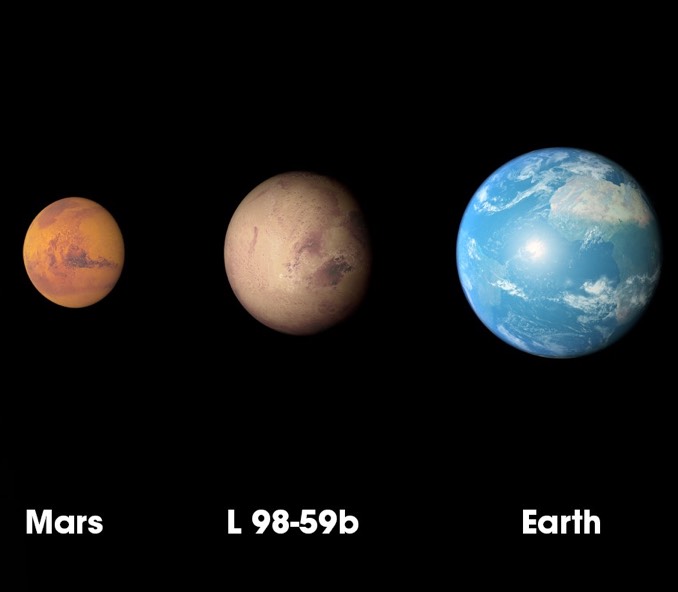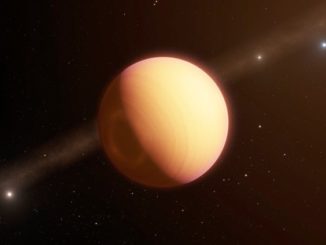
The Transiting Exoplanet Survey Satellite, or TESS, has discovered an exoplanet smaller than Earth orbiting a small star 35 light years from Earth. The exoplanet is about 80 percent the size of Earth and orbits its host sun, an M dwarf known as L 98-59, every 2.25 days, receiving 22 times the solar radiation as Earth receives from the Sun. Two other planets in the L 98-59 system complete their orbits every 3.7 and 7.5 days respectively.
“The discovery is a great engineering and scientific accomplishment for TESS,” said Veselin Kostov, an astrophysicist at NASA’s Goddard Space Flight Center in Greenbelt, Maryland, and the SETI Institute in Mountain View, California. “For atmospheric studies of small planets, you need short orbits around bright stars, but such planets are difficult to detect. This system has the potential for fascinating future studies.”
None of the newly discovered planets orbits in the star’s habitable zone where water can exist as a liquid and as such they would not be candidates for life as it is known on Earth. The surface temperature of the small innermost planet, L 98-59b, is around 330 C (620 F). The two more distant planets, with radii of 1.4 and 1.6 times that of Earth, are also hellish by Earthly standards with temperatures ranging from 230 C (440 F) to 130 C (260 F).
While well inside the habitable zone, all three planets occupy the so-called Venus zone where planets with initial Earth-like atmospheres could experience the sort of runaway greenhouse effect responsible for a Venus-like atmosphere.
“If we viewed the Sun from L 98-59, transits by Earth and Venus would lead us to think the planets are almost identical, but we know they’re not,” said Goddard astrophysicist Joshua Schlieder, co-author of as paper describing the observations in The Astronomical Journal.
“We still have many questions about why Earth became habitable and Venus did not,” he said. “If we can find and study similar examples around other stars, like L 98-59, we can potentially unlock some of those secrets.”



